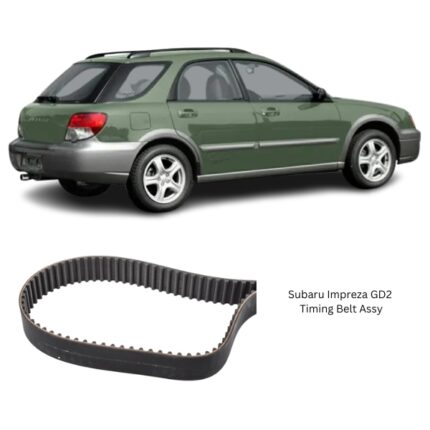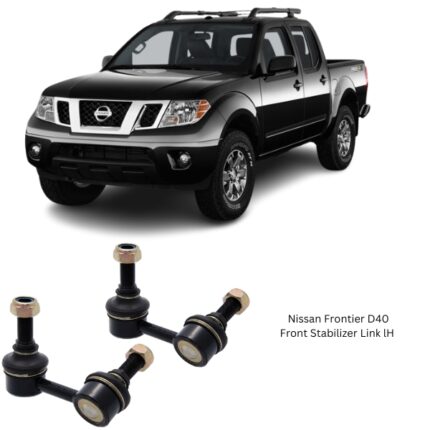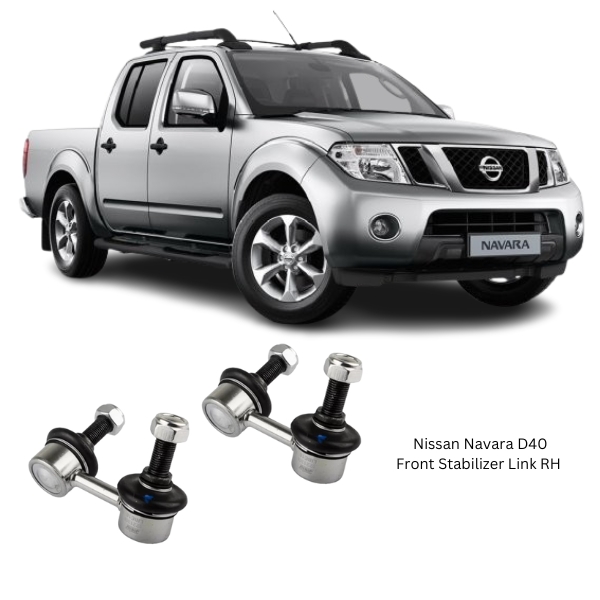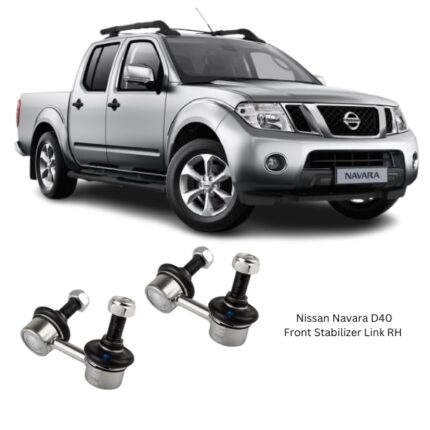Get Nissan Navara D40 Front Stabilizer Link RH 54618-EB71A in Kenya
The Front Stabilizer Link RH—also referred to as a sway bar link or anti-roll bar link (Right Hand side)—is a critical suspension component that connects the front anti-roll bar (stabilizer bar) to the suspension strut or control arm on the right-hand side of the vehicle. Despite its relatively small size, it plays a key role in maintaining vehicle stability, especially during cornering, braking, and uneven road conditions.
By linking the sway bar to the suspension, the stabilizer link helps reduce body roll and enhances handling precision. It ensures that forces generated on one side of the vehicle are efficiently transferred across to the opposite side, promoting balance and traction under dynamic driving conditions.
Purpose and Functionality
The primary function of the Front Stabilizer Link RH is to transfer the movement of the front suspension to the stabilizer (anti-roll) bar. This action helps to distribute the load between both wheels during cornering or when driving over uneven surfaces, minimizing body lean and improving grip.
Core Functions:
-
Body Roll Control
It mitigates body roll during cornering by allowing the sway bar to apply a balancing force to the opposite side suspension. -
Suspension Stabilization
Helps the suspension components on both sides of the vehicle work in unison, enhancing balance and reducing stress on individual components. -
Improved Handling
Increases driver confidence and vehicle control by minimizing excessive leaning or swaying during high-speed maneuvers or sharp turns. -
Ride Comfort
Helps smooth out the ride by moderating quick side-to-side shifts caused by road imperfections.
Construction and Design
The Front Stabilizer Link RH is engineered for strength, flexibility, and reliability under repeated dynamic stress. Its design allows it to transmit force while accommodating vertical suspension travel and rotational movement.
Key Components:
-
Ball Joints or Bushings
Located at each end of the link, these allow for multi-directional movement while maintaining a secure connection. Ball joints are most common in modern applications for enhanced articulation. -
Link Rod (Shaft)
A straight or slightly curved steel or alloy shaft connects the two ends. It’s often coated to resist corrosion. -
Threaded Studs/Nuts
Used to fasten the link to the sway bar and control arm securely.
Materials:
-
Hardened Steel or Alloy Shaft
Delivers high tensile strength to handle dynamic loads. -
Corrosion-Resistant Coatings
Zinc, phosphate, or epoxy coatings protect the link from water, salt, and road grime. -
Polyurethane or Rubber Boots
Cover and protect the ball joints or bushings from dust, debris, and moisture. -
High-Quality Grease
Inside the ball joint housing ensures smooth operation and longevity.
Performance Benefits
When functioning properly, the Front Stabilizer Link RH contributes significantly to the performance and safety of the vehicle.
-
Reduces Body Lean in Turns
Transfers load to the opposite side suspension, keeping the vehicle flatter and more stable during sharp maneuvers. -
Promotes Even Tire Contact
Helps ensure all tires maintain better road contact, improving traction, especially on uneven terrain. -
Enhances Vehicle Control and Predictability
Critical for responsive steering and braking, particularly in emergency situations. -
Minimizes Suspension Noise and Play
Reduces clunks, rattles, or squeaks often associated with worn-out stabilizer links. -
Supports Suspension Longevity
By sharing load across the front suspension, it reduces stress on control arms, struts, and bushings.
Signs of Wear or Failure
Over time, the Front Stabilizer Link RH can wear out due to constant movement, exposure to the elements, and degradation of rubber or ball joint components.
Common Symptoms of a Failing Stabilizer Link:
-
Clunking or Knocking Noise
Especially when going over speed bumps or rough terrain, caused by looseness in the joints. -
Increased Body Roll
Noticeable leaning during cornering or swaying under lateral loads. -
Loose or Wandering Steering
Reduced response or increased play in steering feedback. -
Uneven Tire Wear
Caused by poor alignment and uneven suspension behavior. -
Visual Damage
Cracked or torn dust boots, corrosion, or loose fittings upon inspection.
Timely replacement prevents damage to the sway bar, struts, and other related suspension components.
Installation and Maintenance
The Front Stabilizer Link RH is typically a bolt-on component and can be replaced without disturbing other major suspension parts. However, correct torque and alignment are crucial.
General Installation Steps:
-
Lift and Secure the Vehicle
Safely raise the front end and remove the wheel on the right-hand side for access. -
Remove the Old Stabilizer Link
Unbolt from both the sway bar and the control arm or strut. Use penetrating oil if corroded. -
Inspect Mounting Points
Check for wear, rust, or elongation of the mounting holes. -
Install the New Link
Align and bolt the new stabilizer link in place. Use torque specs provided by the manufacturer. -
Check and Test
After installation, test drive to ensure noise has been resolved and handling has improved.
Tip: Always replace stabilizer links in pairs (LH and RH) to ensure balanced suspension behavior.
Maintenance Tips
-
Periodic Inspections
During oil changes or tire rotations, visually check the links for wear, corrosion, or damage. -
Keep Dust Boots Intact
Torn or missing boots accelerate joint wear. Replace them immediately if damaged. -
Avoid Over-Tightening
Over-torquing can damage the ball joint or strip the threads. -
Replace as Preventative Maintenance
Especially if driving on rough roads, replace every 80,000–100,000 km or as needed.
Follow us on Facebook for more parts.





Reviews
Clear filtersThere are no reviews yet.